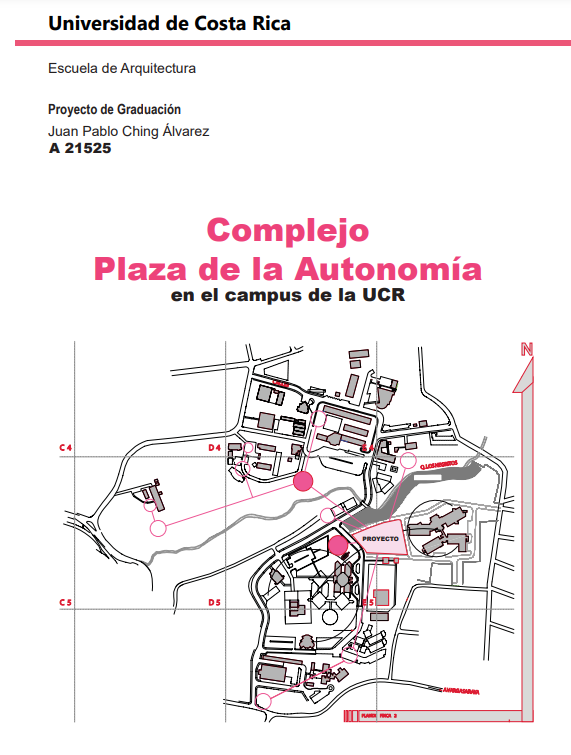
Author
Aldi Bolaños, Joshua
Herrera Corrales, Stephen
Núñez Barrantes, Ana Lucia
Date
2015
Summary
The project “Build a Town” is an alternative method of investigation is limited to the public space of meeting, applied in the Central part of Alajuela. The same is focusing its efforts on the production of knowledge about the city from their residents. In a first instance, the present research is interested in delving into those intangible values of the determinants in the style of life that is projected on the site, under the desire to identify the particularities that differentiate the place from the everyday. It is for this reason that the research is a participatory nature, in which are involved people own site. In this case you opt for to consider to children, adolescents, and older adults for his starring role in the everyday life of this city and its little consideration within the processes of decision making on issues of city and public space. In the case of children and young people were conducted participatory workshops and in the case of older adults is carried out non-structured interviews in public spaces to obtain the necessary information through three filters of analysis: the use, the desire and the meaning. This participation resulted in significant aspects for individuals with regard to the city in the Case of the Central part of Alajuela to those who are called “lines of action” which are the basis for assessing the public spaces at the physical level. From this it is characterized and conceptualizes the city to make a plan for improvement in the same. In this improvement plan is intended to give design guidelines at a conceptual level for the different public gathering spaces of the city. The main thing is the process of generation of knowledge, to discuss the city to argue their processes of change. From this, the research means a further contribution to the approaches of investigation to abandon the positions technocrats of generation and possession of the knowledge and, on the contrary, include the inhabitants as an important part of the strategies of modification and transformation of the city and the public space from our discipline.


